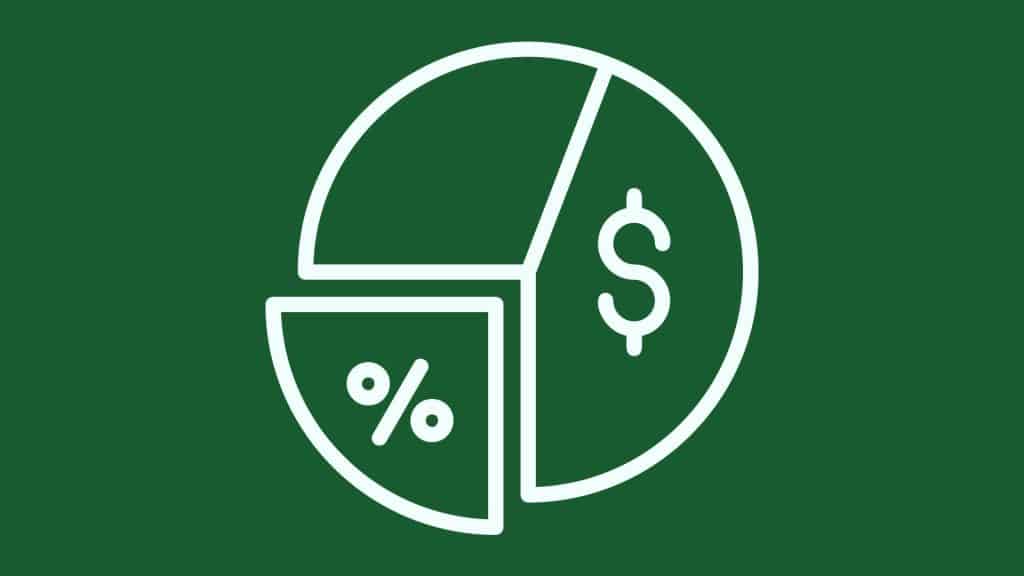When you run a product-based company, managing your margins is essential to ensure that you are making money on each sale. Knowing how to keep and control your profit margins can make or break your business, so it’s important to understand all aspects of it. In this blog, we will discuss the importance of margin management and provide tips and strategies for product-based companies to maximize their profits.
What Are Profit Margins?
A profit margin is the percentage of revenue that a business retains after accounting for expenses. There are three factors that must be considered in your calculation:
Gross Revenue – the money made from the sale of a product
Cost of Goods Sold (COGS) – money spent on production (labor, raw materials, etc.)
Net Revenue – the difference between Gross Revenue and COGS
Profit margins are generally calculated by using this formula:
(Revenue – COGS) ÷ Revenue * 100 = Profit Margin
Let’s use an example to illustrate. Suppose your company made $100,000 in gross revenue. The COGS to produce your product totaled $80,000, leaving your business with a net revenue of $20,000.
($20,000) ÷ ($100,000) = .20 = 20%
Your profit margin is 20%; which means that the company keeps 20 cents of every dollar earned as profit.
Types of Profit Margins
There are several types of profit margins that businesses can calculate, including gross profit margin, operating profit margin, and net profit margin. Each type of profit margin provides different insights into a business’s financial performance.
Gross Profit
Gross profit margin refers to the percentage of revenue that remains after accounting for the cost of goods sold. This type of profit margin is useful for determining how much a product or service contributes to a business’s overall profitability.
Operating Profit
Operating profit margin takes into account all of the expenses associated with running a business, including rent, salaries, and marketing costs. It provides insight into a business’s ability to generate profits from its operations before accounting for taxes and other non-operating expenses.
Net Profit
Net profit margin is the most comprehensive type of profit margin as it accounts for all of a business’s expenses, including taxes and interest payments. This type of profit margin provides the clearest picture of a business’s overall profitability.
Why Knowing Your Profit Margins is Important
Because profit margins measure the total amount of money you are making in a given period relative to your total sales and expenses, they are strong indicators of a company’s pricing strategies and ability to control costs. A higher profit margin indicates that a business is generating more revenue than its expenses, which is an essential aspect of any successful business operation.
Knowing your profit margins can also help you make better pricing decisions. You can use your profit margin to determine how much to charge for your products and services to ensure that you are making a profit. For example, if your 20% profit margin begins to shrink due to increased expenses, you may want to consider increasing your prices to maintain profitability.
Understanding Your Supply Chain
A supply chain is a complex network of activities, from acquiring raw materials to transforming them into finished products and distributing them to consumers or customers. A typical supply chain consists of four main components: suppliers, manufacturers, distributors, and customers.
Suppliers – provide raw materials and components that are used to create products.
Manufacturers – use materials to create finished products.
Distributors – transport products to customers.
Customers – purchase the products to use for their intended purpose.
An example of a supply chain is one that produces food for consumption. Farmers grow produce and send it to food manufacturers to make products like bread or butcher and package livestock. Trucks deliver the food to grocery stores where customers buy and consume it.
Know Your Suppliers and Their Costs
It is essential to know your suppliers and their costs. Having a clear understanding of your suppliers’ pricing structure and lead times can help you make informed decisions when it comes to purchasing materials. You should also be aware of any potential risks associated with each supplier, such as quality issues or delivery delays. By doing so, you can avoid any unnecessary costs and ensure that you are getting the best deal possible.
Understand the Cost of Materials and Labor
A clear understanding of the cost of materials and labor allows you to calculate your production costs and determine the appropriate pricing for your products or services. This information can also help you identify any areas where you can reduce costs without compromising quality.
Track Customer Feedback and Trends
Running a successful product-based business means understanding what your customers want. To that end, customer feedback helps to determine how to improve your product or service. You can also use this information to gauge demand for your products or services and adjust production accordingly. By staying on top of industry trends, you can anticipate changes in demand or production costs and take proactive steps to manage your profit margins effectively.
With a solid understanding of its supply chain, businesses can streamline processes and regulate pricing, which in turn allows them to serve their customers better.
Understanding Your Purchasing Inventory Timeline
Although it’s important to understand how your supplies flow and customers behave, there is one thing that your product-based business must have in order to survive: The product.
Ordering inventory isn’t simply about putting in a purchase order. It’s about knowing when to order, how much to order, and from whom to order. In fact, ordering inventory is a complex process that requires careful planning and attention to detail.
Businesses need to be mindful of how much to get and when in order to reduce unnecessary costs and grow continuously.
An inventory purchase timeline is a document that outlines the steps and timeline for purchasing inventory for a business. It typically includes details such as when to order, how much to order, when to receive the inventory, and when to pay for it. It also outlines any other steps that need to be taken in order to ensure that the inventory is properly managed and accounted for.
Here’s everything you need to know about managing your profit margins through understanding your purchasing inventory timeline:
Calculate your lead time
Lead time refers to the amount of time it takes for an order to be fulfilled from the moment it is placed. It’s essential to factor in lead time when placing an order to ensure that you receive your inventory in time to meet customer demand.
Keep track of your inventory levels
This means knowing how much inventory you have on hand, how much you’ve sold, and how much you need to reorder.
Determine your reorder point
Your reorder point is the inventory level at which you need to reorder to avoid stockouts. To determine your reorder point, you need to know your lead time and your average daily sales.
Use technology
Managing multiple factors to coordinate a purchasing schedule can be a daunting task, particularly for small businesses that can’t afford a large staff. Fortunately, there are a number of online tools and software that can track your inventory levels and even automate your reordering process.
Once you have a good understanding of your purchasing inventory timeline, you can make informed decisions and take strategic action. For example, knowing when and where to purchase inventory can aid in negotiations with your suppliers to get the best prices, or help secure a discount for ordering in larger quantities or paying early.
The Bottom Line
Profit margins are a crucial aspect of your business that, if not managed correctly, can severely impact your bottom line. With a clear understanding of your margins, you can make the most informed decisions regarding pricing, expenses, and overall profitability. By calculating and monitoring your profit margins regularly, you can ensure that your business remains financially healthy and sustainable in the long run.

